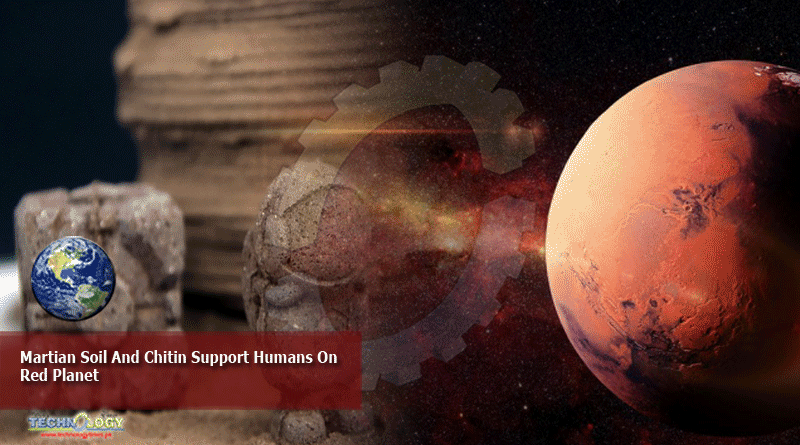A Combination Of Martian Soil And Chitin, A Primary Component In Seashells, Insect Exoskeletons, And Fungi Walls…

These basic building blocks could provide a replenishable material for making rigid shelters that can support humans on the Red Planet.
“[Sustainability is] a key factor of our research,” Javier Gomez Fernandez, one of the researchers on the project, told Digital Trends. “Production scales with waste … Therefore the system scales with the population: The more [humans], the larger is the ecosystem, the larger the production of chitin from waste processing, the more material you can produce. This is the opposite to the current Earth paradigm, where the more you produce, the more resources you deplete, and the more waste you generate.”
Researchers have been working on similar bio-inspired manufacturing process for sustainability on Earth for a decade. However, in a new paper published in the journal PLoS ONE, Fernandez and colleagues describe how the material could be just perfect for life on Mars. The chitin they propose could come from insects, which may also double as a valuable source of protein for the long space journey. This chitin can then be combined with Martian soil to create the finished building material, without requiring much in the way of energy or specialist equipment
Building on a dead rock in space
In an abstract describing their work, the researchers write that, “Given plans to revisit the lunar surface by the late 2020s and to take a crewed mission to Mars by the late 2030s, critical technologies must mature. In missions of extended duration, in situ resource utilization is necessary to both maximize scientific returns and minimize costs. While this [presents] a significantly more complex challenge in the resource-starved environment of Mars, it is similar to the increasing need to develop resource-efficient and zero-waste ecosystems on Earth.”
There are, of course, a few differences, which the researchers are now investigating. These include how the material will likely hold up when interacting with the radiation, low pressure, and low temperatures of Mars. Because nobody wants to spend a couple of years flying to Mars, eating bugs along the way, only to build a house made of recycled bugs that instantly falls apart.
Fernandez continued: “The material presented here is developed for a Martian ecosystem as a way to challenge our technology to its extreme, by applying it to develop circular sustainable manufacturing on the worst possible scenario: A dead rock in space.”
This news was originally published at finance.yahoo.com
